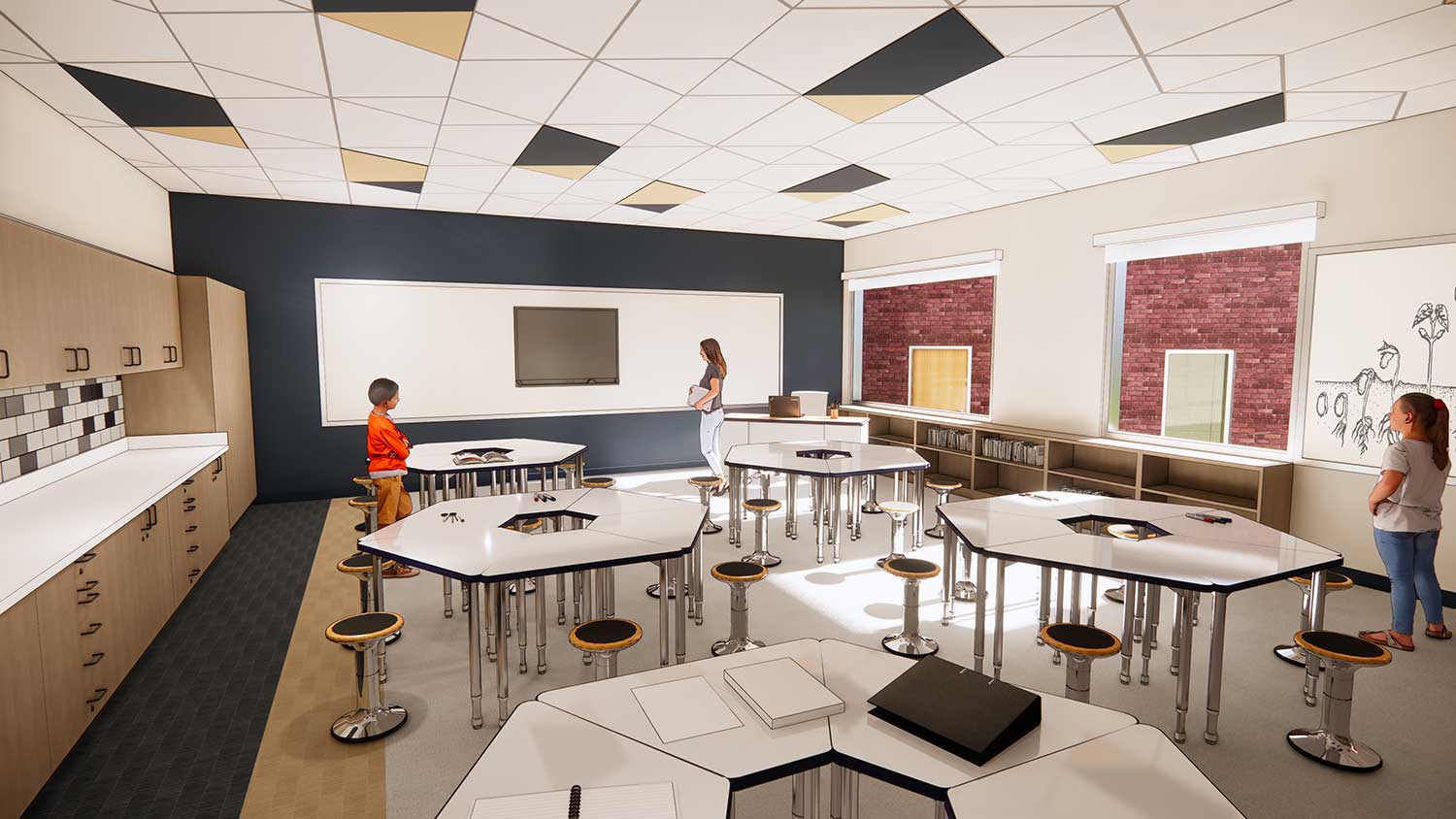Share This Story
Take a walk through any historic K-12 school and you will likely find inconsistencies among prominent material and finish selections featured throughout each wing of the building. Conflicting wall paint colors mixed with irregular flooring patterns or differing cabinetry styles paired with random countertops―these are the typical, disparate interior elements that many districts are working with.
The cause for these incompatible design choices often stems from a series of small, “band aid” renovation projects completed by several different consultants over the school’s lifespan. Cause aside, the impact that these design disparities have on students, educators and facilities maintenance staff is far more important to recognize.
In addition to yielding a suboptimal learning environment that fails to encapsulate the school’s brand and spirit, facilities teams must also arm themselves with an arsenal of cleaning, waxing and maintenance supplies to adequately preserve all varying finishes.
At its best, a K-12 building should boast strong, uniform color choices and strategic graphic elements that coincide with a district’s mission. It should feature carefully selected, healthy materials that are free of VOCs (Volatile Organic Compounds) or other harmful chemicals to keep occupants safe. It should also support responsible finishes selections that are cost-effective, fully functional and aesthetically pleasing.
CPL’s interior design team has developed a standardized approach to specifying materials and finishes throughout K-12 district. At its core, the process prioritizes four key considerations.
Branding
As a visitor moves throughout the interior of a school, intentional branding has the power to visually reflect a district’s core values, eliciting positive feelings of pride and trust among students and faculty. Examples of this proven tactic include:
- Prominent logo placement on flooring, walls and windows
- Tasteful art and graphics installation in the form of inspiring word walls or engaging photography
- Specific product selections like custom terrazzo flooring―a low maintenance flooring system that has the durability and appearance of polished marble or granite but allows enormous versatility among available colors and design elements embedded in its surface.
CPL executed consistent, impressionable branding concepts for the Newburgh Enlarged City School District (NECSD) by proposing a familiar navy and gold theme among finish selections throughout all district buildings. In addition to magnifying school spirit, these thoughtful choices will help maintain uniformity in finish type, manufacturer and performance from school to school.

Rendering of Vails Gate Steam Academy features navy blue accent walls mixed with scattered blue and gold ceiling tiles to bolster NECSD school colors.
Product Safety
Designers are predisposed to help steer clients away from selecting hazardous building materials that contain harmful chemicals such as asbestos, PCBs and formaldehyde. Instead, the urge to choose safe and ‘healthy’ products that support innovation in green chemistry and advance schools towards sustainability goals is a top priority.
CPL often makes recommendations to use products with a DECLARE label, which confirms the removal of any ‘Red List’ chemicals―a list of “worst in class” materials, chemicals and elements known to pose serious risks to human health. We also look to use products that have earned an EPD (Environmental Product Declaration) or have achieved GREENGUARD Certification. Both labels affirm the safety of the products being used―a consideration that cannot be overlooked in a school environment.
Materials Maintenance
Every selected product has its own unique maintenance regiment. For instance, Vinyl Composition Tile (VCT) flooring―a durable flooring system that offers multiple linear pattern options―requires periodic stripping and polishing to keep it looking nice. On the flip side, rubber floor tiles―a waterproof flooring system most often used in gyms and other high traffic areas―can last nearly 50 years without any intense maintenance effort.
Our K-12 Practice team emphasizes these considerations when working with key district stakeholders and facilities maintenance crews to build awareness around the importance of careful material selection.
Cost
Similar to purchasing consumer products from big box stores, significant price reductions come from buying building materials in bulk. This applies to using the same materials throughout a district or even different products that come from the same manufacturer.
CPL works closely with product representatives on behalf of districts to negotiate discounts when minimum square footage of products is purchased. Given recent price escalations, we understand the priority this needs to have when adhering to budgetary constraints.
As K-12 schools continue to age, it is imperative that we help them seamlessly evolve into the twenty-first century. Integrating a standardized approach to specifying materials and finishes is one small way to make big strides in this effort. Purposeful interior selections can allow school buildings to be re-imaged with personality and identity, drawing students, faculty and members of the community into an educational environment that’s destined to inspire.
